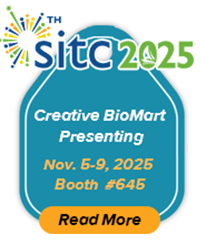| Species : |
Human |
| Source : |
HEK293 |
| Tag : |
Fc |
| Description : |
The tropomyosin-related kinase (Trk) family consists of TrkA, TrkB and TrkC. TrkA is the high-affinity receptor for NGF but also binds NT3 with lower affinity. TrkA is primarily expressed in neuronal cells, while an alternatively spliced isoform is expressed in non-neuronal cells. Specifically, during development TrkA is involved in processes controlling axon and neurite growth, the regulation of dendrite architecture, patterning of neuronal innervation and modulation of proteins important for neuronal function such as neurotransmitters. In the adult nervous system TrkA is involved in regulating synaptic function and plasticity, neuron survival as well as mediating pain and inflammation.TrkA is a heavily glycosylated transmembrane protein and contains 13 potential N-linked glycosylation sites. |
| Molecular Mass : |
TrkA-Fc Chimera migrates as a broad band between 90 and 130 kDa in SDS-PAGE due to post-translation modifications, in particular glycosylation. This compares with the unmodified TrkA-Fc Chimera that has a predicted molecular mass of 67.6kDa. |
| PI : |
TrkA-Fc Chimera separates into a number of isoforms with a pI between 5.0 and 6.7 in 2D PAGE due to post-translational modifications, in particular glycosylation. This compares with the unmodified TrkA-Fc Chimera that has a predicted pI of 5.85. |
| % Carbohydrate : |
TrkA-Fc Chimera consists of 25-50% carbohydrate by weight. |
| Glycosylation : |
TrkA-Fc Chimera has N-linked and may have O-linked oligosaccharides. |
| Purity : |
>95%, as determined by SDS-PAGE and visualized by silver stain. |
| Formulation : |
When reconstituted in 0.5 ml sterile phosphate-buffered saline, the solution will contain 1% human serum albumin (HSA) and 10% trehalose. |
| Reconstitution : |
It is recommended that 0.5 ml of sterile phosphate-buffered saline be added to the vial. |
| Storage : |
Lyophilized products should be stored at 2 to 8°C. Following reconstitution short-term storage at 4°C is recommended, and longer-term storage of aliquots at -18 to -20°C. |



